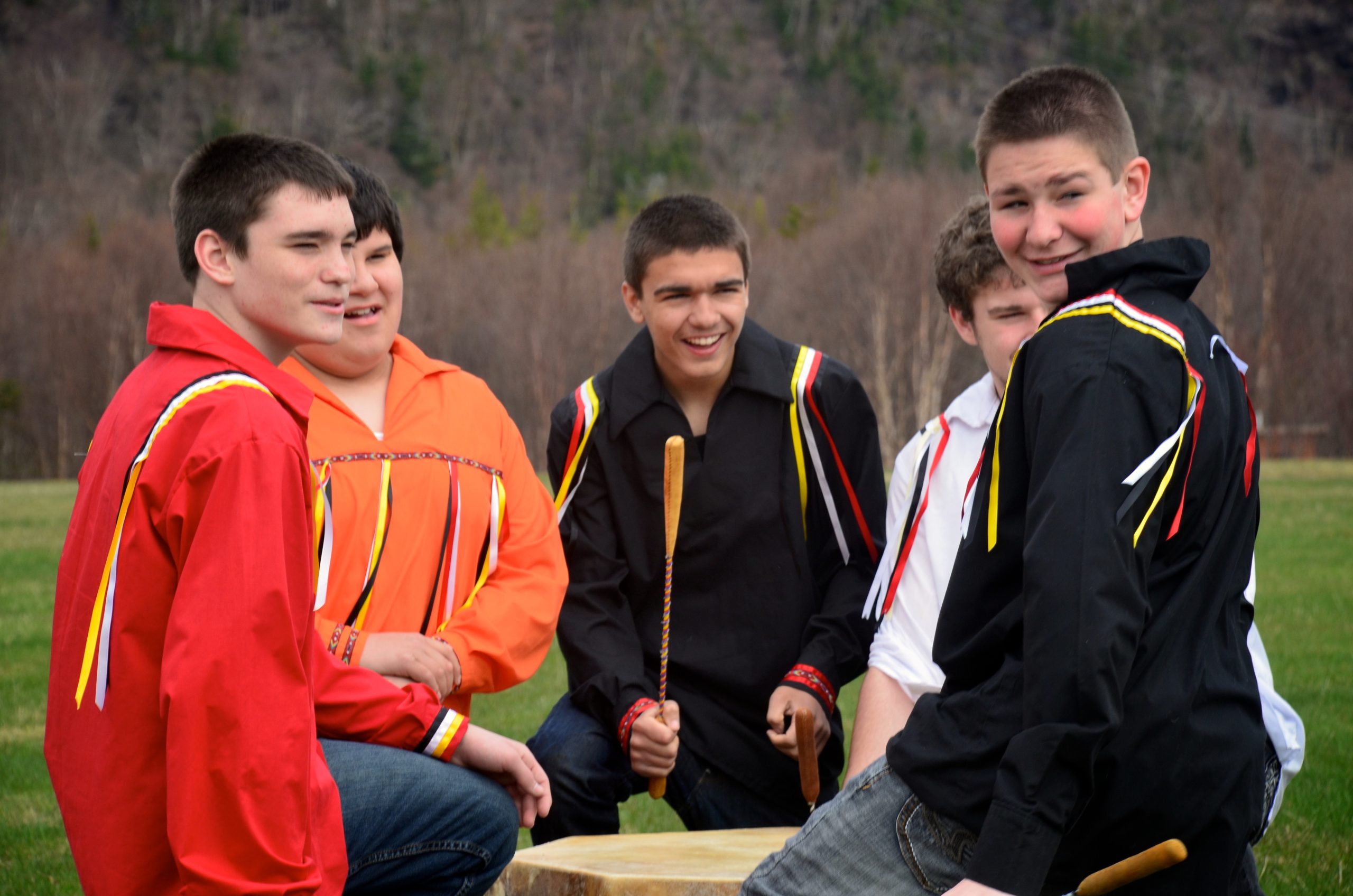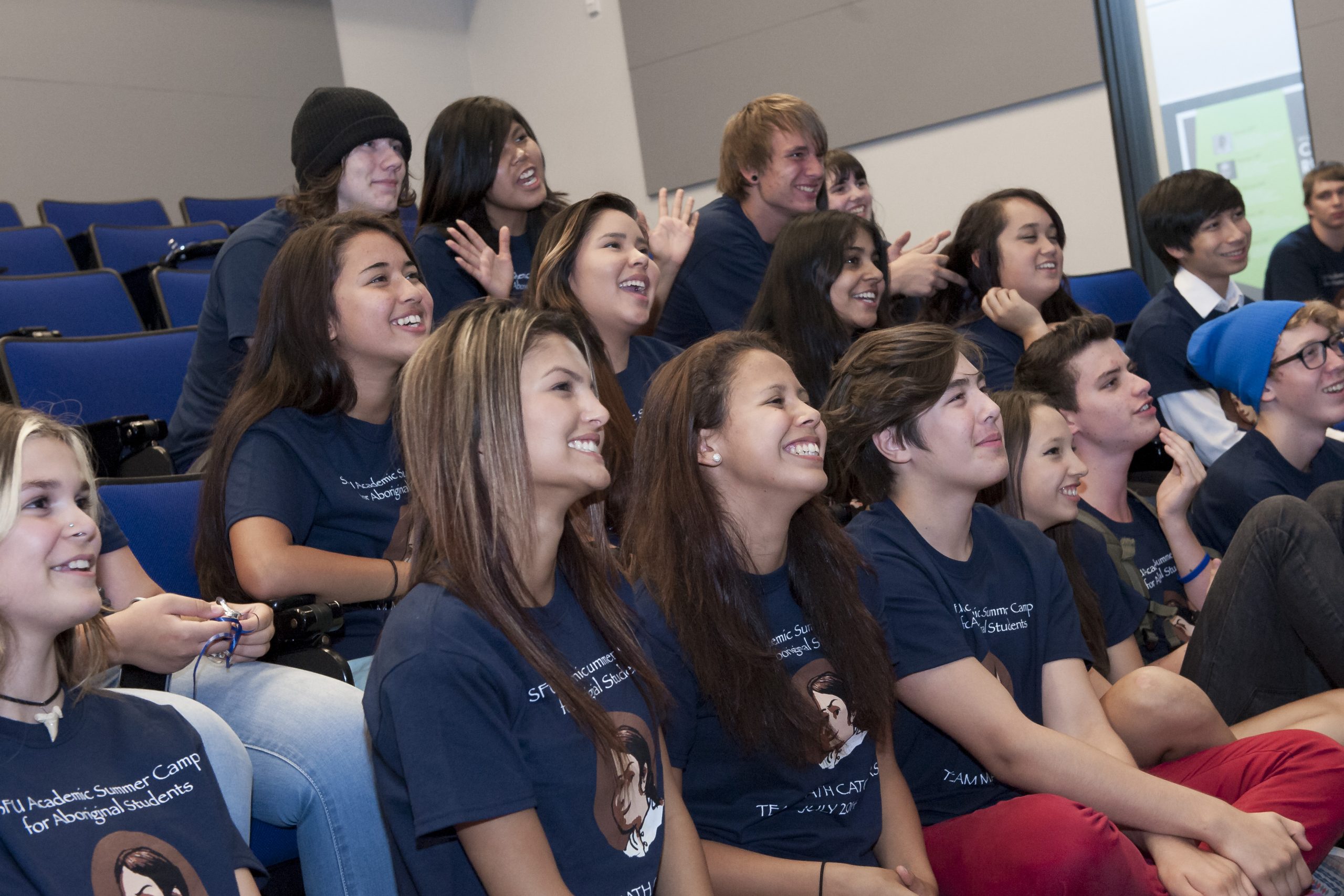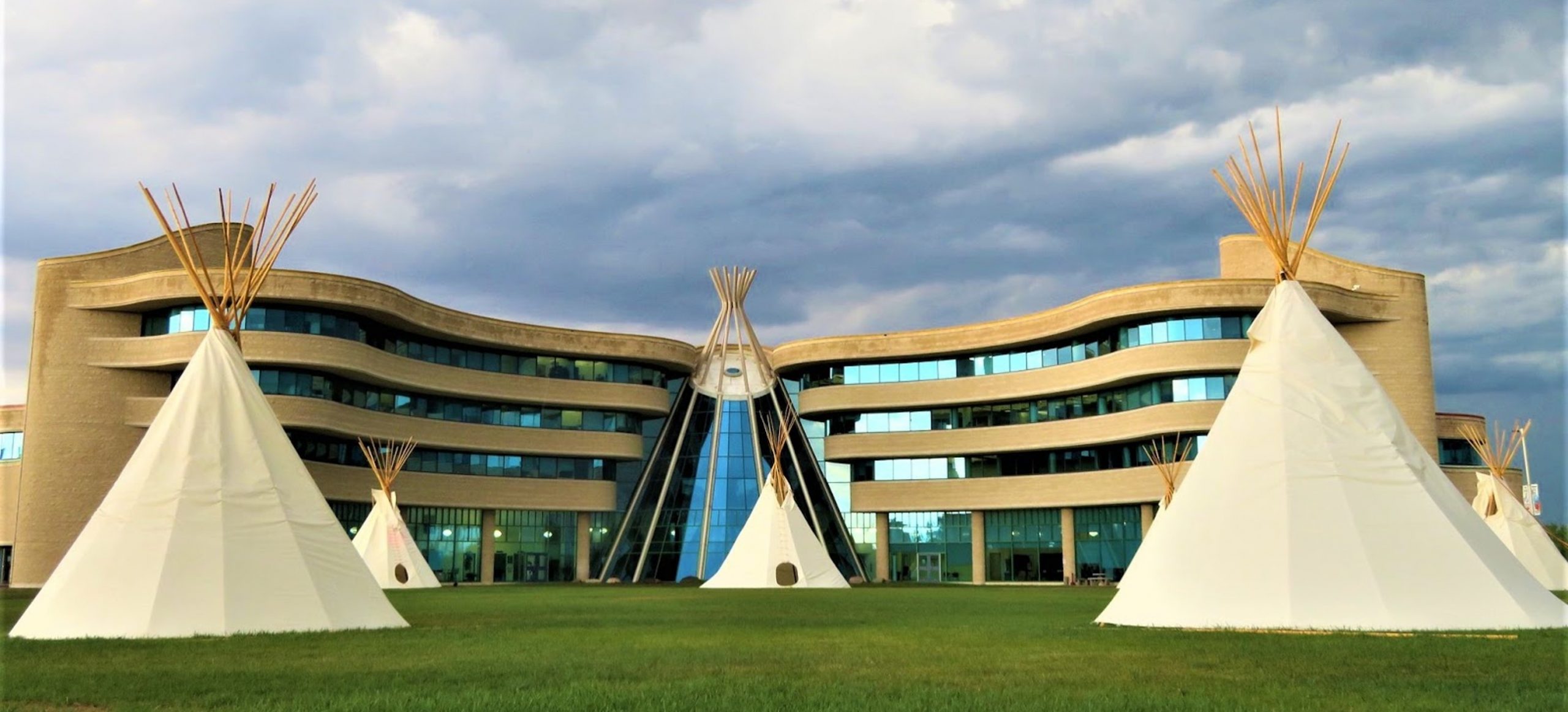The Modern Treaty Era


We have brought up the issue of education in several chapters, since education affects so much of life, from employment and economic potential to equity and reconciliation.
Traditional Education
Indigenous communities emphasize that children need traditional knowledge, disseminated in traditional ways such as story-telling, learning-by-doing, and observation of the Land. Traditional teaching helps establish a healthy sense of identity, connects children to their culture, history and community, offers a perspective to challenge and enrich other types of knowledge, and provides information and tools with which to navigate the world.
Especially in rural areas, traditional knowledge helps people understand and utilize the available natural resources. It can inform climate, ecological and other studies.

Understanding and transmission of traditional knowledge is enhanced when students know their native language.
The 2022 National Indigenous Economic Strategy (NIEDB et al, 2022, call #39) recommends that governments provide funding so that Indigenous communities can study and archive their traditional knowledge. It also suggests the creation of an Indigenous Knowledge Institute which would not only collect and archive traditional knowledge and research related to Indigenous peoples but also develop culturally appropriate research ethics and protect Indigenous intellectual property rights (calls #70 and 72.)
Mainstream academic education
The Census gives us the good news that, as can easily be observed in society, Indigenous educational attainment as commonly measured is constantly improving. High school completion rates rose between 2005/6 and 2015/6, by 9% for Métis, by almost 10% for First Nations on reserve and Inuit, and by 12% for First Nations off-reserve.
There remains, however, a significant gap between Indigenous and non-Indigenous educational achievement, especially for Inuit and First Nations. It has been estimated that eliminating the education and training gaps between non-Indigenous and Indigenous would result in 8.5 billion dollars of additional income for Indigenous people.[1].
In the following chart we observe that the percentage of non-Indigenous people without a high school diploma is much smaller than First Nation, Metis and Inuit percentages.

The graph does not show that only four out of ten young people on reserve graduate from high school compared to seven out of ten First Nations off-reserve.[2] What might be the reasons for these discrepancies?
Barriers to Educational Achievement:
From what we have learned so far, we can identify several barriers to mainstream educational achievement in First Nations communities, all of which are amenable to change.
First, Indigenous peoples have experienced dispossession and discrimination. Many Indigenous families have lower income and are headed by parents with lower-than average formal education. Lower socioeconomic status is correlated with lower educational achievement for children.
The Final Report of the Truth and Reconciliation Commission (2015)[3] cited studies showing that children of residential school survivors, both on and off reserve, are less likely to be doing well at school. Part of this is due to lower incomes and higher levels of food insecurity on the part of residential school survivors.
Residential and day schools for generations shamed Indigenous children and served to extinguish their knowledge of native language and culture. Indigenous families may still distrust educational institutions and curriculums because of systemic racism. Writes Robin Diangelo (2018, p. 67), about the situation in the United States, “Although many parents of colour want the advantages granted by attending predominantly white schools, they also worry about the stress and even the danger they are putting their children in. These parents understand that the predominantly white teaching force has little if any authentic knowledge about children of color and has been socialized (often unconsciously) to see children of color as inferior and even to fear them.”
Parents and guardians will be especially wary if children must leave their home communities to attend school elsewhere. For example, at an Elders’ focus group in Miawpukek First Nation, several Elders said they left school in grade 6 because for the remainder of elementary school they would have had to board with strangers in a town 7 km away by boat.[4]
Such concerns help explain why enthusiasm for education has been lacking in some communities. Attendance at some reserve schools has been unreliable or interrupted for long periods of time.
Distance from educational programs and difficulty recruiting instructors for remote communities is one of the barriers to educational achievement. The author found that a community’s 2016 educational achievement score, a component of the Community Well-Being index, was strongly negatively correlated with its remoteness. The correlation coefficient between educational achievement and remoteness was -0.576.
Remote learning may be an option for students who do not want to leave their home communities. As the coronavirus pandemic has proven, internet access is increasingly important in education. Unfortunately, connectivity can be unreliable in remote communities.
Keewaytinook Internet High School is an example of an online education program that pre-dates the pandemic. Operated by Keewaytinook Okimakanak Board of Education in the Sioux Lookout, Ontario region, it normally offers tutorial sessions and land-based activities via a qualified teacher living in each community where students live, as well as access to an actual classroom and classroom assistant in each community.
Meanwhile, as we will detail below, education on reserve has been under-funded. Schools on reserve have often been in disrepair and lacking libraries, gyms, and computer labs. The contaminated elementary school in Attawapiskat, Ontario, was the focus of Member of Parliament Charlie Angus’ 2015 book Children of the Broken Treaty. Schools on reserve also find it difficult to recruit, house, and retain teachers.
Maggie Jones (2020) has shown how critical government support for post-secondary students is. She describes how federal support of Status and Inuit post-secondary students declined in 1989, after twelve years of covering all the students’ expenses. After 1989, increases in total spending would be limited, and spending would be divided among bands. That meant that some eligible students did not receive funding.
Jones has been able to correlate the decline in financial support to a decrease in trade certifications for men, a decrease in bachelor degrees for women, and a 2.9% decrease in college completion for both sexes. She also finds that high school graduation rates declined, especially on reserves, likely because the expected payoff to graduating was reduced. As access to post-secondary programs becomes more difficult, motivation for getting a high school degree depends more on local employment opportunities. Jones calculated that the decline in postsecondary student support also reduced 2006 employment rates, the number of weeks worked, and the number of hours worked; it also increased social assistance rates. She figures that roughly 10% of the difference in hours worked between Indigenous and non-Indigenous in 2006 could be attributed to the decrease in postsecondary support.
Another issue is the lack of data and analysis of Indigenous education. In its June 5, 2020 editorial, the Globe and Mail contrasted the high school graduation rates on reserve in BC (70%) with those in Manitoba (36%). Off-reserve, high school graduation rates for Indigenous youth were 81% in BC and 61% in Manitoba. It noted that BC’s substantial improvement in high school graduation rates has been achieved by using data to find problems, identify solutions, and direct spending.
Having reviewed several barriers to educational attainment, let’s examine the different categories of Indigenous Education. The follow graphic shows the system circa 2020.

Indigenous and mainstream education
Generally, Canada’s provinces govern, administer, and fund educational institutions. However, some educational institutions belong to Indigenous communities, particularly First Nations. Educational programming by and for First Nations can be divided into three general categories:
- Band-run elementary schools (Primary schools) and Secondary schools (High Schools) on reserve
- Post-Secondary Institutions
- Professional Training Programs (Trades, Certifications, and Qualifications).
Each of these is administered, funded, and supported slightly differently, as the preceding graphic illustrates.
Band-run Elementary and Secondary Schools:
In 2012 about 64% of First Nation students attended one of the 515 band-operated schools on reserves.[5] The Indian Act (sec. 114 to 122) is the current legislative authority over on-reserve schooling; however, it makes no provisions about quality of the education, guaranteed funding, or standards for educators. In section 115 (a) it states that the provincial minister has the authority to “provide for and make regulations with respect to standards for buildings, equipment, teaching, education, inspection and discipline in connection with schools”.[6] This leaves wide open the question of what the standards of education on reserves should be and has led to disparities between on and off-reserve education.

Since the rejection of the First Nations Control of First Nations Education Act in 2014, which proposed a series of centralized regulatory policies, there is no minimum legislated education standard for on-reserve First Nations students, with the exception of British Columbia’s First Nations Jurisdiction over Education in British Columbia Act (2006), Northern Quebec’s James Bay and Northern Quebec Agreement (1975), and Nova Scotia’s Mikmaq Education Act (1998).[7]
In the recent past, the federal government channeled money to Bands through various programs, for which Bands had to apply. Don Drummond, former Chief Economist with TD Bank, studied school funding with policy analyst Ellen Kachuck Rosenbluth (2013). They estimated that schools on reserve were receiving significantly less money per student than what provinces spend on schools equally small, remote, having large numbers of special needs students, and having special language or cultural requirements. Drummond has said that reserve schools were receiving at least thirty percent less than comparable provincial schools.[8]
Barry Anderson, one of the people responsible for BC schools’ improved success rates, and John Richards, a public policy professor at Simon Fraser University, produced a 2016 paper outlining several steps necessary to improve education on reserve. In brief, Anderson and Richards recommend increased and more reliable government funding for schooling and for related expenses such as transportation and lunches; having the community set clear educational achievement goals; training school staff to track results; and incentivizing higher performance with special payments. Their recommendations are summarized in the Table below.

In 2019 the federal government, in consultation with the Assembly of First Nations, the National Indian Education Council, and the Chiefs Committee on Education, acted on several of Anderson and Richards’ recommendations.
![First Nation On-Reserve Education System Structure and Responsibility Breakdown. Research & graphic by: Pauline Galoustian [147]](https://ecampusontario.pressbooks.pub/app/uploads/sites/1088/2021/03/8-12.jpg)
Indigenous Services Canada now provides guaranteed base funding per student similar to the base funding provinces pay. An additional $1,500 per student funds language and culture education. Schools on reserve will also receive additional funding based on remoteness, language, poverty rates, and school size.[9]
Elementary and High Schools not on Reserve:
A 2008 study by John Richards found that the British Columbia school districts which had higher Indigenous academic achievement prioritized the success of Indigenous students, involved Indigenous leaders and community supports, used data to design district-wide strategies to improve the performance of Indigenous students, and followed through on these strategies.[10] They were more successful even after adjusting for overall student performance, the number and share of Indigenous students, and socioeconomic conditions in the district.
Richards’ study recommended that all provinces and territories follow BC’s example. It also recommended that Indigenous parents be informed about which schools have higher performing students, since Indigenous students do better academically at schools where non-Indigenous students are performing well. Indigenous students also do better at schools where there are fewer Indigenous students, suggesting that having a large concentration of Indigenous students in a school leads to a negative peer effect on academic performance.
Post-Secondary Education:
Funding for public post-secondary institutions is the responsibility of the provinces; however, Indigenous Services Canada (ISC) supports Indigenous students at these institutions and also provides for post-secondary programming at Indigenous institutions.
ISC pays for students’ tuition and other expenses through its Post-secondary Student Support Program. ISC’s Post-Secondary Partnerships Program funds post-secondary instruction organized by Band Councils and higher-order Indigenous governments, as well as the First Nations University of Canada in Regina, Saskatchewan.
As of April 2020, the total allocated by the Department of Indigenous Services for post-secondary Education in 2020 was 74 million dollars (Government of Canada, 2020c). Later, that amount was doubled by the addition of 75 million to help with Covid-19 disruptions.
How much is the original 74 million dollars per Indigenous student attending post-secondary? Statistics on the number of Indigenous or non-Indigenous youth in post-secondary education are not easy to come by. In 2016, 24 per cent of Canadian 19 year-olds were in college, and 36% of Canada’s 21 year-olds were in university.
Meanwhile, there were about 83,000 Status persons aged 15-19 and about 89,500 aged 20-24.[11] This gives us an estimated 86,900 between the ages of 18 and 22.

Knowing that Status persons are 44.5% of the total self-identifying Indigenous, and that the Status population tends to be younger than other Indigenous populations, let’s estimate that the total number of Indigenous youth of college age is double the 86,900: 173,800.
If 24% of these 173,800 youth went to postsecondary, that would be a potential 41,712 attending, and the 74 million dollars spent by Indigenous Services Canada in 2020 would amount to $1,744 per person per year.
Professional Programs:
Professional programs allow people to qualify for various employment opportunities, such as serving alcohol, selling houses, doing carpentry work, or providing financial advice. Professional programs are overseen by provinces and the territories. Various Indigenous organizations have created certification and/or training programs for their constituencies.
These organizations include[12]:
- Individual First Nations such as Ermineskin First Nation in Alberta
- Local associations such as the Athabasca Tribal Council in Alberta
- Regional associations such as Community Futures Treaty 7 in Alberta
- Indigenous governments established by modern treaty such as the Cree Regional Authority and the Kativik Regional Government
- Organizations serving a particular cultural group such as the Gabriel Dumont Institute of Native Studies and Applied Research based in Saskatchewan and Tungasuvvingat Inuit based in Ottawa.
- Organizations not associated with any particular cultural group or Indigenous government, such as the Centre for Aboriginal Human Resources Development Inc., in Winnipeg, Manitoba
The programs above, and many others, receive some financial assistance from the federal government’s labour ministry (Employment and Social Development Canada), through its ISET program (Indigenous Skills and Employment Training).
Employment and Social Development Canada also offers money to the ISET-funded organizations for special projects as they arise, via its Skills and Partnership Fund.
The total amount allocated to ISET and the Skills and Partnership Fund in 2020 was 3 million (Government of Canada, 2020c). Clearly, the many organizations listed above must also be using other sources of funding such as provincial grants, modern treaty payments, and own-source revenue.
Consequences for Employment and Earnings:
It is well-known that differences in educational achievement translate into different occupational opportunities and earnings. Anderson and Richards (2016) write,
“It is hard to exaggerate the role of high-school completion in predicting whether a teenager avoids poverty over his or her lifetime. Whether students are First Nation, Métis, or non-Aboriginal, high-school completion increases the probability of being employed by at least 25 percentage points.”
In a 2013 study, Professor Donn Feir finds that, for both Métis and First Nations persons living off-reserve, education makes the biggest difference to a person’s weekly earnings. Moreover, Métis and off-reserve First Nations benefit as much from their education as do non-minority Canadians, as demonstrated in two previous studies. However, the difference in earnings between non-minorities and First Nations living on reserve is mostly unexplained by educational differences or any other observable factor, strongly suggesting that there are significant impediments to economic activity on reserve, such as will be discussed in Chapters 24, 27, 28 and 29.
Indigenous leaders understand the importance of education. Some have referred to post-secondary education as the “New Buffalo”. Cree-Salteaux Elder and Professor of Indigenous Studies Blair Stonechild has in fact written a book called The New Buffalo: The Struggle for Aboriginal Post-secondary Education in Canada (2006).
Calling post-secondary education a “buffalo” (meaning bison) implies that education now plays an essential role in providing for Indigenous people, the way the bison provided for Plains First Nations prior to the nineteenth century.
Chief Mi’sel Joe of Miawpukek First Nation put it this way:
“Education is the engine that drives everything today. The important tool is the education tool and we have to learn to adapt to that and if we do that then we level the playing field a little more. If you don’t have the education to effectively run any community then you are always going to be behind somewhere. Money doesn’t fix [our problems]. Money sometimes just adds to our anguish that’s already there.”[13]
Possible Negative Feedback between Employment and Education:
It is possible that the existence of employment opportunities for people without higher education serves as a disincentive to pursue higher education. This has been cited as a problem for communities where there are a lot of high paying jobs in the oil and gas sector (see Chapter 26), and in a community which tries to guarantee jobs for its members.[14] While there are many good jobs that do not require post-secondary education, the concern is that too many young people will lose interest in post-secondary or even high school education.
Education contributes to human capital. It provides knowledge, critical-thinking skills, perspective, and many other things which can be used and enjoyed over a lifetime.
In our next chapter we will discuss the importance of land as a form of capital, realizing that land is so much more than that to Indigenous people.

- NAEDB(2016) ↵
- Anderson and Richards (2016) ↵
- Truth and Reconciliation Commission , Volume 5, p. 69. ↵
- 2009 interview recorded in Orr (2013). ↵
- Assembly of First Nations (2012). ↵
- Indian Act, 1985 (Sec. 114 to 122) Source: https://laws-lois.justice.gc.ca/eng/acts/i-5/fulltext.html ↵
- Assembly of First Nations (2012) ↵
- Porter, Jody (2016) ↵
- Indigenous Services Canada (2019a) ↵
- Richards (2008) ↵
- Statistics Canada (Feb 7, 2018). ↵
- Government of Canada (2020b). ↵
- 2009 interview recorded in Orr (2013). ↵
- Orr (2013). ↵

